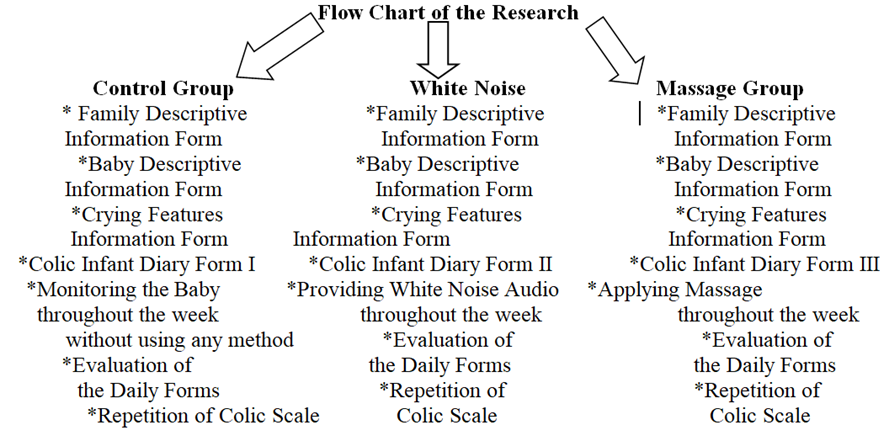Compar?son of Wh?te No?se and Massage Appl?cat?on Methods on the Col?cky Infants Aged 0-12-Months*
Article Sidebar

-
Baby Massage, Infantile Colic, Pediatric Nursing, White Noise.
Abstract
Objectives: The study was planned to the white noise or massage treatments in reducing colic which determine experimentally that a more effective method.
Methods: The 0-12 months age babies and their families who come to the 500 Evler Health Center in the city of Gaziantep would form the system. The sampling had formed of 90 babies in the 0-12 months age who were colic diagnosed, who were crying daily more than 3 hours, who during routine medical examination had passed the hearing test, who were having no physiological problems. These 90 babies would be separated into three groups by a randomly selecting method. As data collecting means, The Patient Consent Form, The Family Descriptive Information Form, The Baby Descriptive Information Form, The Crying Features Information Form, The Colic Baby Diary Form I/II/III, A CD player, The White Noise CD, The Baby Massage Education CD, Infantile Colic Scale to was used.
Results: While babies of screaming (194.38 hours), crying (252.45 hours), stay awake (828.31 hours) times in the control group and babies of screaming (115.48 hours), crying (226.79 hours), stay awake (759.07 hours) times in the massage group, babies of screaming (65.79 hours), crying (117.17 hours), stay awake (489.00 hours) times in the white noise group were found less than those in other groups (p<0.01).
Conclusions: Consequently, it was established that white noise CD affected the babies positively and it was an effective and usable tool for calming down the babies.
Full text article
Authors
Article Details
Most read articles by the same author(s)
- Şenay Çetinkaya, Hümeyra Yüksel, The Knowledge of Nurses in Pain Management and Use of Non-Drug Methods and Associated Factors , Jour Med Resh and Health Sci: Vol. 6 No. 12 (2023): Journal of Medical Research and Health Sciences
- Emine Erçin, Şenay Çetinkaya, Examining the Health and Medical Staff Perception in Children Aged 9-11 with the Method of Projective Illustration* , Jour Med Resh and Health Sci: Vol. 6 No. 12 (2023): Journal of Medical Research and Health Sciences